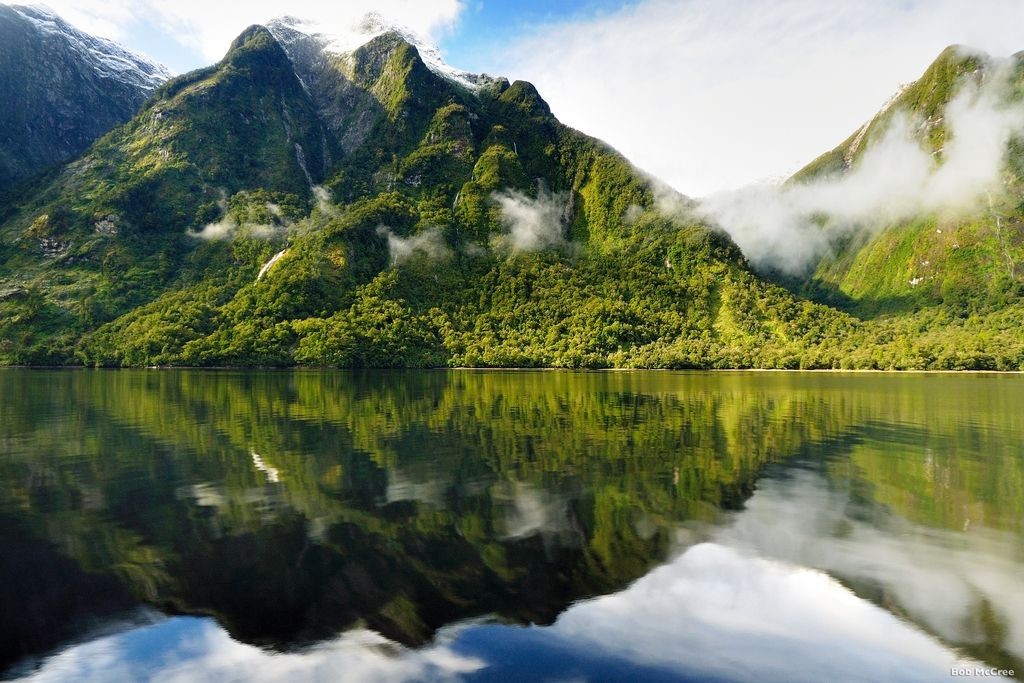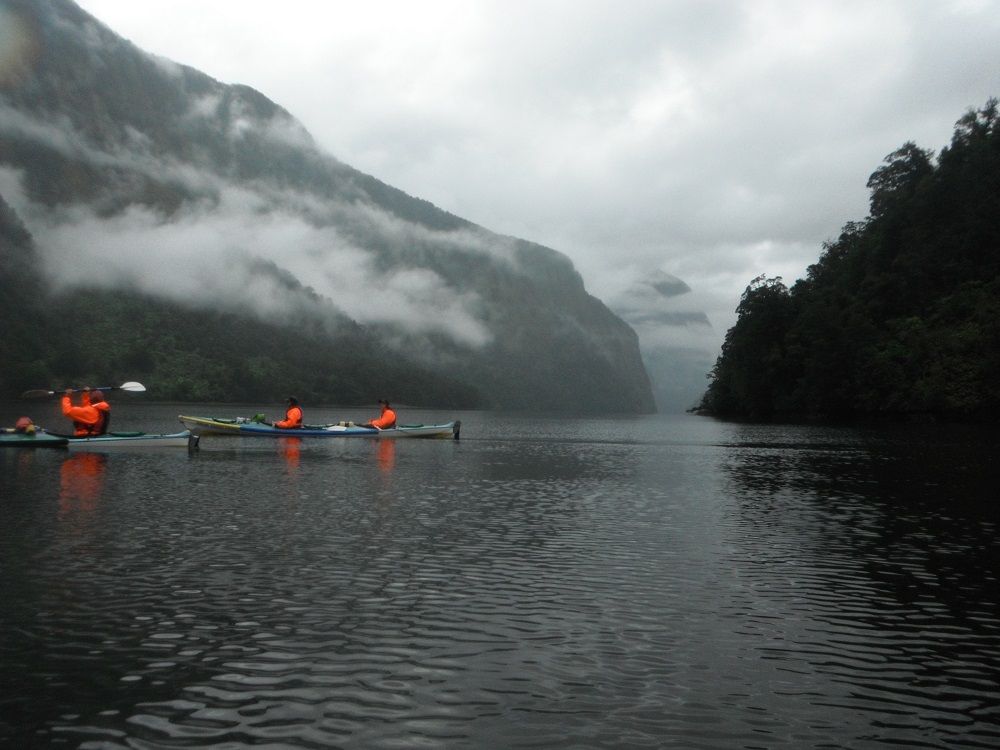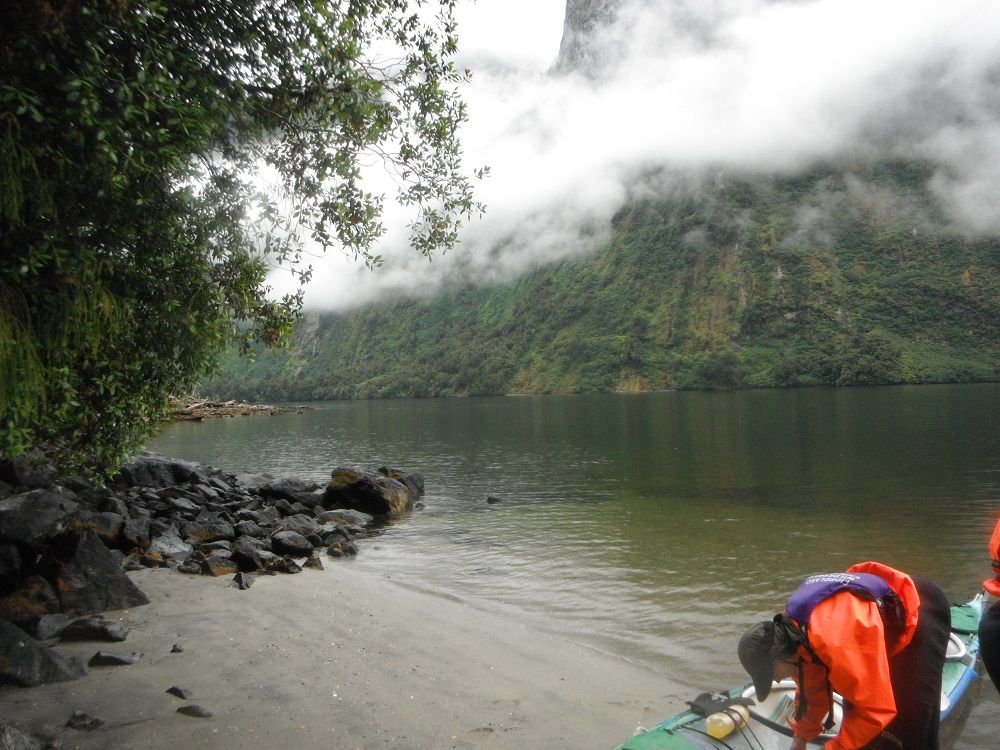Kayaking Doubtful Sound, New Zealand
Steep valley walls, oily-black waters and friendly dolphins make New Zealand’s Doubtful Sound a kayaking must. Just be prepared for those pesky sandflies…
Milford Sound is visited by roughly one million tourists a year. A fiord in the South-west of New Zealand, it tops the “must-see” lists of travel articles and bucket lists alike thanks to its sheer cliffs and deep, dark waters.
Cruises, walking tours and scenic flights bring travellers from the world over to Milford Sound’s far-flung shores and Rudyard Kipling even dubbed it the eighth wonder of the natural world. And don’t get me wrong, all the attention is well-deserved. But Milford is just one of many fiords that line the southern part of New Zealand’s West Coast, and every single one of them deserves fame just as much as the other.
The reason Milford has sprung to such popularity in comparison to the surrounding fiords is its accessibility – a mere 2 hour road-trip from the nearest town of Te Anau (or five hours from the popular tourist hub of Queenstown) — make it possible for tour companies to coach visitors in.
In comparison, Doubtful Sound, its bigger, deeper neighbor can only be reached via an hour-long cruise over Lake Manapouri and a 45 minute coach-ride across the Southern Alps. The result: just two or three ships cruise Doubtful sound, making it a much more tranquil trip for people like me, who fancy exploring this remote corner of the world in a kayak.

So, after a 6am start and the aforementioned cruise and bus, my partner and I have donned our wetsuits and packed our double sea kayak with dry bags filled with camping gear and insect repellant, ready for a two-day adventure into Doubtful Sound. The starting point is Deep Cove, at the south-eastern tip of the fiord. Already, the tranquility is overwhelming, just two buildings and a wharf with three boats for company. After paddling for 30 minutes, it’s just us, our guide and five fellow kayakers.
Doubtful Sound, like all the “Sounds” that make up the region is not a Sound at all but a fiord (the New Zealand spelling of Fjord) – an ocean-flooded glacial valley, where steep valley walls jut straight out of the oily-back water, with beech trees anchoring on for dear life. The water that streams down the sides of the mountain is so fresh you can drink it. We kayak to the side of one of the many waterfalls that line the fjord and fill up our bottles. The taste just has just a hint of the forest above.

Every year, 7.6 metres of rain pours over the Sound. The rainwater that runs off from the mountains makes up the top ten metres of the fiord, which is separated from the seawater below by the tannins that are collected from the forest above.
It’s these tannins that give the Sound its dark, almost oily appearance and prevent sunlight from penetrating the water, allowing all kinds of deep sea species to thrive just 10-20 metres below the surface. Very good news if you’re a diver.
Above the water, there’s plenty to see as well. As we dip our paddles through the still water and travel further into Doubtful Sound we catch a seal spinning right next to us. Later, my partner hears a splash behind us, we turn around and there’s three, maybe four, bottlenose dolphins, diving in and out of the water. They’re far shier than the seal, but we hear their squeaks as they swim away, occasionally coming above the surface, before disappearing completely into another arm of the bay.
We paddle for five hours, but when I check the map we’ve explored just a tiny part of Doubtful Sound. You could happily spend days kayaking the different arms, islands and inlets that make up this wild place. But what’s even more shocking is that since 9am this morning we have seen no other people.
We do, however, have sandflies for company. If you haven’t been to New Zealand, you probably aren’t familiar with the sandfly (I’m pretty sure there’s a conspiracy to keep them secret from would-be tourists). They are midge-like creatures with no fear, and an appetite for blood. And Doubtful Sound it is heaving with them.

As we pull up to camp at Hall Arm, they immediately swarm us, landing on our hands, our mouths, our eyeballs, anything they can get to. We spend the evening cooped up in the communal sandfly shelter, eating and playing card games. Thankfully, come nightfall, the buzzing stops and silence returns to the Sound.
We’re on the water by 8am the next day. The plan is to explore more of the Sound, heading up to Elizabeth Island, before returning to Deep Cove for our journey back. The Sound is just as still as the day before, the green mountains reflecting on the dark surface, only broken by our paddles. But, like that, the weather changes, the cloud darkens and the wind picks up, whipping the waves into a frenzy.
We have to change our course: Instead of going around the island we need to paddle across the sound to its near end, where there should be some respite from the gale. It doesn’t look far; perhaps 100 metres. But after paddling for 15 minutes we are no closer; for every meter we gain we are pushed straight back by the waves.
Time to raft up. We hold our kayaks together for stability, the waves slamming between us and get the sail out. It’s no good, the wind is so erratic, we desperately need to get behind the island for it to do any good. So we split up again, arms aching as we paddle as hard as we can, the island slowly getting closer. Once we reach it, we raft up again, and this time the sail works, carrying us back towards Deep Cove, and to civilization.
We booked our kayak journey through Real Journeys. The overnight trip cost $399 dollars per person (200 GBP), including transport, kit and a guide.
